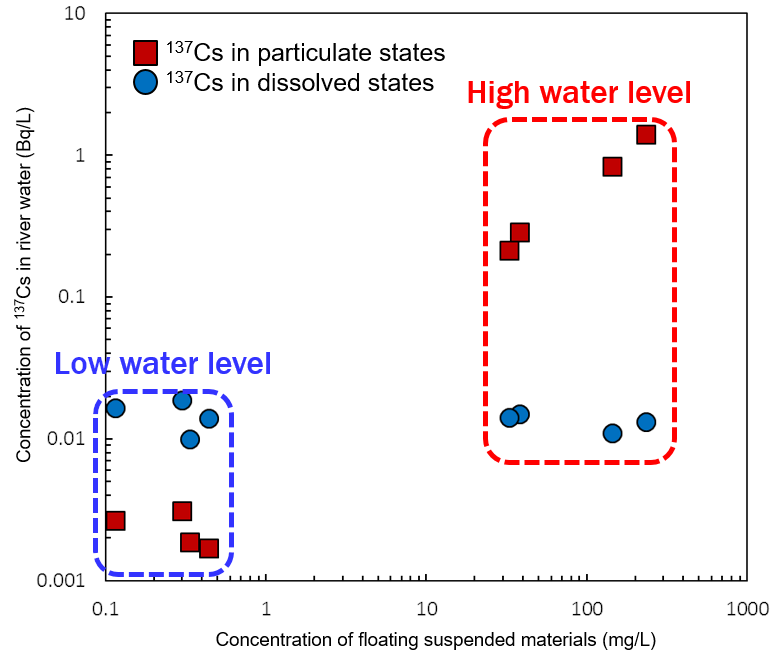Radioactivity Dynamics in River System
(2017)
QIs it possible to use river water for drinking water?
AIn the case of the Kido River in Fukushima Prefecture, the concentration of radioactive cesium in river water is lower than the maximum permissible level for drinking water and concentration of dissolved 137Cs does not increase even when turbidity of the water is high during floods.

Fig.1 137Cs concentrations in riverwater down the Kido dam in 2014
- When water level is low, the concentration of 137Cs (particulate state and dissolved state) in river water was lower than 0.1Bq/L.
- When water level is high, the concentration of 137Cs in dissolved states increases to about 1 Bq/L, that is lower than maximum permissible value of drinking water (10 Bq/L).
- The concentration of radioactive cesium in the dissolved state is lower than 0.1 Bq/L even during high flow periods. The concentration of radioactive cesium tends to decrease with decreasing turbidity. Therefore most of radioactive cesium in river water is in the particulate state, and it is presumed that the concentration of radioactive cesium will decrease with time (see also; Q Is there a continuous input of cesium contamination to rivers from forests)
According to the Ministry of Environment, radioactive materials were lower than 0.1 Bq/L in any other rivers in Fukushima Prefecture.
Reference: ”Results for Monitoring of Radioactive Materials in Public Water in Fukushima Prefecture” Homepage of the Ministry of Environment
Related articles
- Will the concentration of radioactive cesium in lake water remain high unless contaminated sediments are removed from reservoir beds? 【Tendency of the change of the concentration in reservoir beds】
- Will the concentration of radioactive cesium in lake water remain high unless contaminated sediments are removed from reservoir beds?
- Does radioactive cesium move from the ground surface to underground or into groundwater? 【Movement in the water flow in the litter layer】
- Does radioactive cesium move from the ground surface to underground or into groundwater? 【Movement in underground water】
- How much does additional internal dose exposure would be if we assume highest concentration during the fire event was exposed? How harmful for the health?
